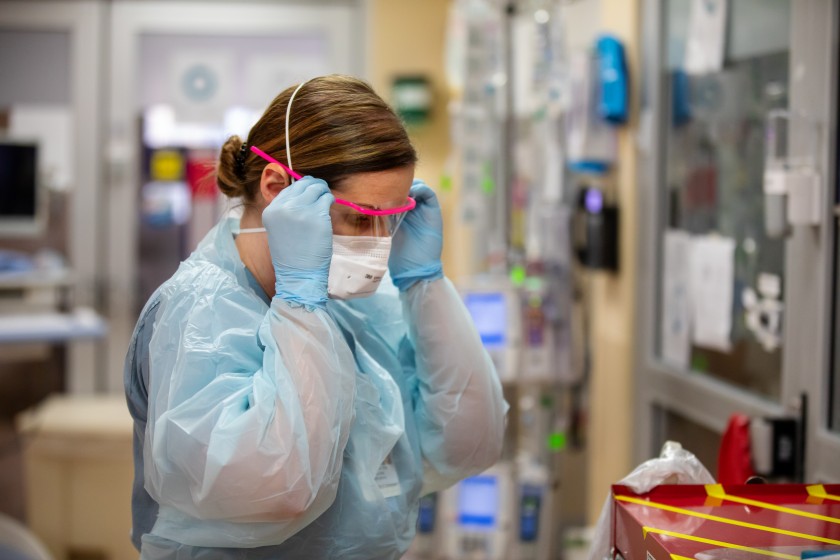Donning and Doffing of Personal Protective Equipment (PPE)
Published: May 15, 2020By Alison Pondo

Personal protective equipment (PPE) standards and protocols have become a key factor in the prevention of COVID-19 spread for both health care workers and community members.
To ensure the safety of all Tampa General Hospital patients and team members, specific sequences for donning, or putting on, and doffing, or removing, PPE has continued to remain a focus and important part of protection against infectious materials. These sequences are tailored to the type of PPE being used and care situation that team members are entering.
All team members are trained on the appropriate use of PPE from their first orientation with continuous annual competencies required.
“PPE is used every day by healthcare workers to protect themselves, patients and others when providing care,” says Angela Rumore, Clinical Education Specialist at Tampa General Hospital. “PPE helps protect healthcare workers when exposure to blood, body fluids, excretions, secretions (except sweat), mucous membranes, or non-intact skin is anticipated or when needed for isolation patients to reduce the spread of infection in the healthcare setting.”
To accurately don PPE, the below sequence is followed:
- Perform hand hygiene prior to donning PPE.
- Put on gown
- Gowns must fully cover team members’ torsos from neck to knees, arms to wrists and must wrap around their back
- Put on mask or respirator
- Ties must be secured around ears or the back of the head
- The flexible band must be fitted to the nose bridge
- Masks must fit snug to the face and below the chin
- Put on goggles or face shield
- Both must be placed over the face and eyes and adjusted to fit
- Put on gloves
- Gloves must be extended to cover the wrist of the gown that was already put on
When removing PPE, all pieces are considered contaminated and there is a particular sequence team members follow to ensure they avoid any infectious materials.
To accurately doff PPE, the below sequence is followed:
- Remove gown and gloves
- Gowns are pulled away from the front of the body using only gloved hands so that the ties break. As the gown is pulled off, gloves are also peeled at the same time and only the inside of the gloves are touched in this process
- Remove goggles or face shield
- Goggles and face shields are removed from the back of the head, lifting any bands without touching the front to avoid contamination
- Remove mask or respirator
- Masks and respirators must be grasped from the ties or elastics in the back and removed without touching the front to avoid contamination
Hand hygiene must be performed between steps if hands become contaminated and immediately after removing all PPE. All PPE is placed in appropriate waste containers and team members must immediately wash their hands or use an alcohol-based hand sanitizer after removing.
“PPE is an important aspect of infection prevention that ensures the safety of all patients and team members when utilized appropriately,” says Rumore.
To see the full visual of appropriate donning and doffing of PPE, visit www.cdc.gov/hai/pdfs/ppe/ppe-sequence.pdf
